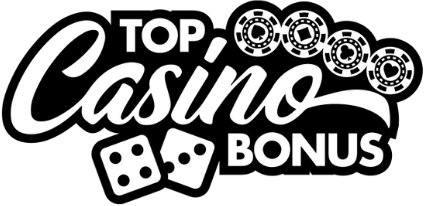Understanding call bets in French roulette
When most folks dip their toes into the waters of French roulette, they focus on outside bets or maybe dabble with a few straight-up numbers. But here’s the rub, they’re missing out on one of the richest, most strategic veins the game has to offer: call bets. Call bets aren’t your everyday wagers. These are precision tools for mastering the wheel, rooted in centuries of European tradition. And I’ve seen more people blow their bankrolls simply by not understanding how these bets really work than I care to count.
Table of contents
The foundation of French roulette philosophy
Before looking at call bets specifically, you’ve got to understand that French roulette was never just a game of chance. It’s about reading the wheel like a seasoned tracker reads footprints in dust. The layout isn’t just cosmetic, it’s strategic, crafted to reflect sectors and symmetry. The French wheel differs from the American one not only in the absence of the double zero, but in number placement. That tiny change makes a world of difference in how bets interact.
Why call bets matter
Call bets, or “announced bets” as they’re known among old-timers, aren’t placed on the table layout like a typical inside or outside wager. Instead, you tell the croupier the bet verbally, hence, ‘call.’ They’re organized around sections of the wheel itself, not the felt. This shifts your strategy from mathematical calculation to spatial awareness. Done right, that’s where the magic happens.
Breaking down the major types of call bets
There are several traditional French call bets, and they’re all about wheel coverage. You’re not just betting on random numbers. You’re targeting specific arcs of the wheel, something you can’t do efficiently with standard table layout bets. I’ll break them down here like I taught young dealers back in the late ’80s, chalkboard and all.
Voisins du Zéro
This one means “neighbors of zero,” and it covers 17 numbers around the green 0, from 22 to 25 clockwise. It takes nine chips placed across splits and corner bets, and it’s designed to saturate that sector. If the ball favors zero, this wager hits more often than it misses. It’s a defensive net and best used when you’re observing a wheel bias, trust me, more common than most realize.
Tiers du Cylindre
“Thirds of the wheel”, this bet covers a swath directly opposite Zero on the wheel, from 27 through 33. Using six chips on six splits, it’s straightforward and ideal when the numbers start clustering in the second third. I’ve seen tourists blindly go all in on red or black, while a shrewd bettor quietly places Tiers and walks away fat and happy.
Orphelins
Now we’re into rogue territory. Orphelins, or “the orphans,” cover two disconnected patches: 1, 6-9 and 14-17. It’s a five-chip play, a bit riskier, but it’s saved more than a few losing streaks. This is the kind of bet you pull out when patterns start breaking and the wheel turns unpredictable. Think of it as the hail Mary of call bets.
Jeu Zéro
This one’s elegant and precise. Just four chips to target seven numbers adjacent to zero, tighter than Voisins. Ideal for smaller bankrolls with surgical accuracy. It’s like working with a scalpel while others are swinging hammers.
The critical tool of neighbor bets
Now, here’s where the real craftsmen separate from the weekend gamblers, Neighbor bets. These let you place a bet on one number and its immediate neighbors, usually two on each side. That’s five numbers for a single wager. You can customize this pattern if you play online, especially in innovative online versions like immersive roulette, where interface flexibility gives you better control than even a physical layout ever could.
Observing wheel behavior
If you’re not watching spin outcomes and developing a heat map in your head, you’re playing blind. Wheels, particularly older ones, develop micro imperfections. These turn into biases. I remember an old walnut wheel in Monaco that consistently favored the 19-23 sector. The elite players always had neighbor bets trained on that arc. You learn to trust the wheel after enough evenings under the casino lights.
Common rookie mistakes
One of the biggest blunders I see is players confusing call bets with combo bets. These aren’t just aesthetic groupings, they’re geometrically relevant to wheel distribution. Others try to calculate odds based on table layout instead of wheel proximity. That’s like trying to draw a map of Paris using a subway chart, technically correct, functionally useless.
Misapplication of chip values
Betting the right sectors means placing exact chip amounts on very specific splits and streets. A misalignment of even a single chip can skew your coverage and leave you exposed. I’ve coached dealers on this precision using nothing more than colored string and thumbtacks mapping out wheel arcs, the old-school way, but it works.
How to practice strategically
You don’t learn this overnight. The best way to hone your call betting practice is on free simulation platforms or low-limit online tables. Consistency is key, track outcomes, chart winning sectors. Think like a physicist, play like a gambler.
Don’t be afraid to blend in tactics from games like Sic Bo or video poker either. These games require risk layering and probability tracking that sharpens your mental discipline. Even modern slot machines teach bankroll management through volatility analysis.
Refining your touch over time
Good call bettors don’t just memorize sectors, they feel the pulse of the wheel. They sense tempo changes. They spot psychological tells in table momentum. It’s like jazz. You don’t play every note on the sheet. You play the rhythm of the room. I once watched an old Corsican player ride a dead wheel to a €50,000 win, just on Jeau Zéro and neighbor patterns, uncanny intuition built on decades of mistakes and hard-won insight.
Final thoughts, wisdom forged in wheel rotations
French roulette isn’t chess. It’s fencing, graceful, strategic, and deadly in the hands of a master. Call bets are your footwork and parry. Ignore them, and you’re fighting blind. But wield them well, and you won’t just rely on luck, you’ll start shaping outcomes.
Most modern players chase high payouts and fast wins, but it’s patience and razor-sharp understanding that wins the long game. You want real control? Learn the wheel. Speak its language. And that means mastering call bets, not as a novelty, but as a necessity.





0 Comments